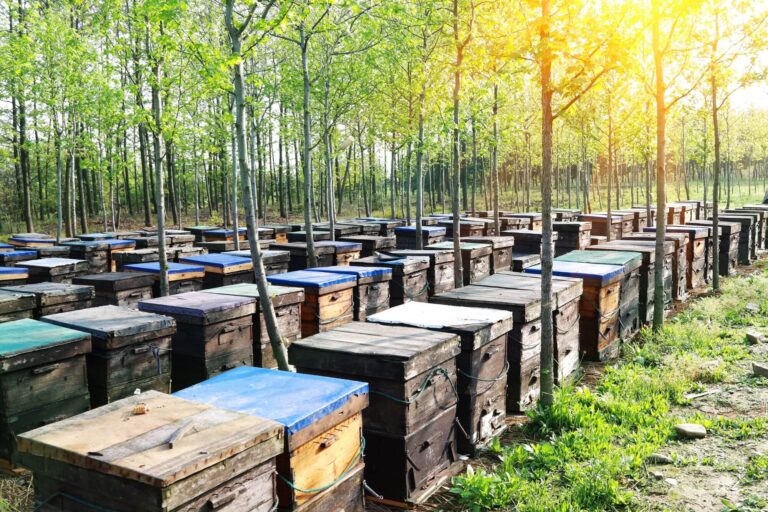Myth-busting bees!
Myth-busting bees! Bees – and particularly honey bees – have featured in the folklore of just about every human culture since ancient times. From the…
Myth-busting bees!
Bees – and particularly honey bees – have featured in the folklore of just about every human culture since ancient times. From the San people of the Kalahari Desert, who told of a bee being instrumental in the creation of the first human, to the Mayan god Ah-Muzen-Cab, who was intimately associated with bees and honey. In Hindu mythology, bees were pivotal in banishing the demon Arunasura; according to the ancient Greeks, Apollo was raised by three ‘bee maidens’; while the Roman god of desire, Cupid, was reputed to dip his arrows in honey to make them irresistible to his unsuspecting targets. In Egypt, honey bees were revered as the messenger of Ra, falling like tears to pass on sacred messages, and to this day beeswax candles are central to the sacraments of the Roman Catholic church.
However, a number of popular misconceptions have persisted to the present day, despite ample evidence to the contrary. Here are some of the most prevalent:
‘All bees can sting!’
In reality, only female bees possess stingers, which are modified ovipositors. Furthermore, it has been estimated that only 75% of bee species are capable of stinging humans; many have such small stingers that they are generally regarded as ‘stingless’. Bees will not usually sting unless provoked or threatened.
‘Honey bees can sting repeatedly.’
Honey bees are unique in possessing barbed stingers. Although they are able to sting other insects over and again, their stingers become embedded in the thick skin of mammals. The stinging apparatus is ripped from the bees’ bodies, resulting in their death soon afterwards.
‘All bees make honey.’
Lees than 4% of bee species manufacture honey. Although native stingless bees have recently become popular with apiculturists in Australia, these colonies produce only a very limited quantity of honey, and it is only true honey bees of genus Apis that generate sufficient volumes of honey for commercial harvesting. Bumblebee colonies may also store a very small quantity of honey – equating to about one or two teaspoons.
‘Bees live in hives.’
This is something of a misnomer in that a ‘hive’ is usually acknowledged to refer to an artificial nesting chamber constructed by beekeepers. Fewer than 8% of bee species are social in nature, and of these, less than 3% construct large well-organised nests. Many solitary species excavate individual burrows in the soil, or tunnel into tree trucks or the stems of pithy plants. Others construct small nests from mud or resins.
‘Bees have a complex social structure, with strict division of labour.’
Again, although this may be true particularly of honey bees and stingless bees, together with bumblebees and some other species, the overwhelming majority of bees are solitary, with little interaction between individuals except for the act of mating! Solitary females fashion a simple nest, into which they deposit sufficient food for the development of a single egg. This process may be repeated a number of times.
‘Bees don’t sting at night.’
Well, bees do enjoy some down time, and are certainly less active at night, but they will sting whenever they perceive a threat – regardless of the clock!
‘Bees are tireless workers.’
Female worker bees are undoubtedly worthy of the image of the ‘busy bee’, however most males serve little purpose except to mate, and could well be characterised as being notoriously lazy. Some even rely upon the workers to feed them!
‘The best way to get rid of a bees’ nest is to seal it up.’
Inevitable, this will only serve to make the bees mad. And if the nest is in a wall cavity, the bees may burrow through your wall in an attempt to get out, and could end up inside your house!
‘You’ve got to tell the bees!’
Finally, there is an interesting tradition in Appalachian and Cornish folklore, as well as a variety of other cultures, that dictates beekeepers must inform their bees of important events such as births, deaths or an impending move. Failure to do so, it is said, will incur the wrath of bees, although it is doubtful that they will speak back!


